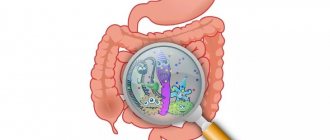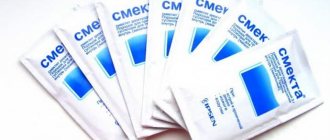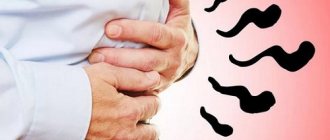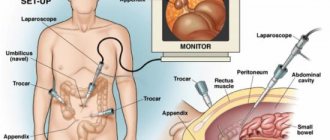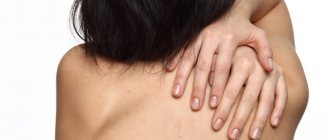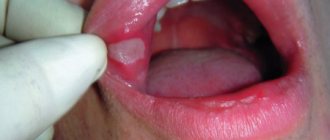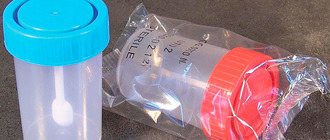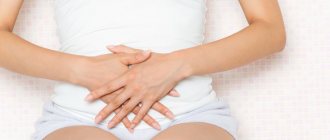What are the causes of fecal incontinence
There are many causes of fecal incontinence.
The most common of these is injury to the muscles and nerves of the pelvic floor, the muscles, ligaments and tissues that support the uterus, vagina, bladder, and rectum during a difficult vaginal birth or so-called “obstetric injury.” Surgeries on the anal canal and perineum or trauma to them can cause problems with holding stool. Often, incontinence is complicated by an incorrectly performed operation to excise an anal fissure or remove hemorrhoids, which resulted in damage to the muscles of one or both anal sphincters.
Various proctological diseases (chronic constipation, hemorrhoids with prolapse of internal hemorrhoids, irritable bowel syndrome, as well as various inflammatory diseases of the colon (usually ulcerative colitis)) can cause dysfunction of the muscles of the anus and rectum. Some people, especially older people, may develop decreased tone of the anal muscles, increasing with age.
Diarrhea (diarrhea) may be accompanied by a sudden urge to defecate (empty the bowel), as well as leakage of loose stool.
Disease or injury that affects the nervous system and leads to disruption of the nerve endings of the anal canal and sphincters (for example, stroke, diabetes, multiple sclerosis), as well as general poor health caused by chronic diseases, increase the risk of developing incontinence.
Recovery period
Recovery after hemorrhoid surgery proceeds individually for each patient. The course of rehabilitation depends on:
- patient's age;
- the presence of chronic diseases;
- type of operation performed (open, closed);
- presence of intestinal diseases;
- presence of complications.
After surgery to remove hemorrhoids, all factors that could cause an exacerbation of the disease or complications should be excluded. It is also important to follow your doctor's recommendations after hemorrhoid surgery. He will tell you what you can eat on the first day after the intervention, how to go to the toilet, etc.
The postoperative period includes:
- carrying out hygiene procedures;
- elimination of pain syndrome;
- adherence to a physical activity regime;
- diet;
- wound care.
Diagnostics
The symptom of fecal incontinence allows one to immediately diagnose the nosology, but it is important to determine the etiological factor that caused it. Therefore, such patients are prescribed a number of studies:
Survey. It may be a subjective study, but in this case it allows one to more or less determine the cause of the pathology and refer the patient to the appropriate specialist. Anorectal manometry. It is carried out to determine the level of sensitivity of the rectum, assess the strength of compression of the sphincter muscles and its innervation. MRI. Allows you to take accurate photographs of the muscular apparatus of the anus. Transrectal ultrasound. It is carried out to assess the structure of the muscular system. The procedure is invasive, but absolutely safe. Proctography. The method is X-ray and shows the rectum while feces are in it. It is determined how much chair she can hold, how it is distributed and other details.
Sigmoidoscopy
A study for visual assessment of the walls of the rectum, which is especially important if scarring is suspected or to exclude a tumor process. Electromyography. Allows you to assess the condition of the neuromuscular apparatus of the pelvic floor.
After determining the exact etiology of the disease, a treatment plan is drawn up, which may consist of one or more types of therapy.
Therapy methods
An important role in prescribing complex treatment is played by the correctly identified cause of the disease. Treatment is carried out by gastroenterologists and pediatricians. The total duration of the course of therapy ranges from six months to a year. The goal of treatment is to eliminate constipation and gradually restore rectal function.
Treatment of encopresis includes several stages. The first stage is to cleanse the intestines of accumulated feces. For fecal incontinence, it is necessary to cleanse with enemas twice a day for a month. This helps eliminate the involuntary release of feces, since the intestines are empty. In addition, the child gradually becomes accustomed to regular and timely emptying of the rectum, that is, a defecation reflex is developed at a certain time.
The second stage of treatment is aimed at preventing constipation. The following therapeutic methods are used for this:
- Proper nutrition.
- Taking dietary fiber supplements.
- Restoring the body's water balance (drinking regime).
- Taking laxatives.
- Developing correct bowel habits.
The final stage of treatment is aimed at gradually reducing the use of laxatives. All other recommendations during this period remain in force.
In addition, complex treatment of edcopresis must necessarily include psychological therapy aimed at restoring the child’s nervous system and ridding him of fears and complexes. Thanks to this treatment program, the functioning of conditioned reflex mechanisms is restored, the conductivity of nerve impulses is improved and the tone of the sphincter is increased.
For children whose development of encopresis is caused by an unfavorable family environment, it is necessary to create a calm and friendly atmosphere. Under no circumstances should parents scold or reproach their child, much less punish him. It is necessary to explain to teenage children that this disease is temporary, and he is not the only one suffering from such an illness. It is necessary to rid him of obsessive fears. Achieving these goals is already half the treatment.
Fecal incontinence in children occurs involuntarily. It must be remembered that the child does not feel this process, so you cannot scold him for sloppiness. This behavior will only make the situation worse. You should also know that incontinence is the uncontrolled passage of feces in children over three years of age. In younger children, such manifestations are considered normal.
Establishing a bowel movement routine
Bowel training is essential for successful treatment of encopresis. In order for the bowel movement to stabilize, it is necessary to develop the habit of visiting the toilet at a specific time of day. For example, in the morning, after meals or before bed. Proctologists pay special attention to this condition for the treatment of fecal incontinence, because it is the correct bowel behavior that will reduce the frequency of unpleasant episodes. The “training” process itself is quite long, it can take from two weeks to several months.
Causes of the disease
What leads to incontinence:
- Haemorrhoids;
- Nerve failure;
- Diarrhea;
- Muscle weakness;
- Muscle damage;
- Constipation;
- Pelvic floor dysfunction;
- Reduced muscle tone due to intestinal injury.
With diarrhea, the rectum fills with liquid stool more quickly, making it more difficult to keep it out. Diarrhea can cause fecal incontinence. Constipation weakens and stretches the sphincter muscles, which reduces the ability to retain stool. Muscle weakness or damage to both or one sphincter is often accompanied by incontinence. Weak muscles are unable to keep the anus closed, unable to prevent leakage. The damage is often caused by trauma or surgery.
When the nerves are incompetent, the sphincter muscles do not contract or relax properly. The nerve endings that control the muscles do not work correctly, causing encopresis. In other words, the nerve endings do not transmit the signal about the desire to visit the toilet. Nerve failure occurs in people after childbirth, stroke, inflammatory disease, trauma to the nervous system, or after prolonged ignoring of the urge to defecate.
A healthy rectum stretches to hold stool until a bowel movement occurs. Surgery, radiation therapy, and inflammatory bowel disease lead to the formation of scars on the walls, which makes the intestine less elastic. Therefore, the rectum does not stretch well without retaining feces. Encopresis occurs. With external hemorrhoids, the anal sphincter does not completely close the anus, and loose stools, along with mucus, leak out.
Pelvic floor dysfunction in humans (improper functioning of nerves and muscles) leads to incontinence because:
- The sensitivity of the rectum decreases;
- The compressibility of muscles decreases;
- The rectum prolapses;
- The bowel wall bulges into the vagina (rectocele);
- The pelvic floor relaxes.
Dysfunction appears after childbirth, especially if forceps were used or an episiotomy (cut of the perineum) was performed. Fecal incontinence occurs both immediately after childbirth and years later.
How is fecal incontinence treated?
After a thorough history taking, examination and examination of the patient, aimed at determining the cause and severity of the problem, the method of treatment is determined. Treatment is prescribed by the attending physician individually, taking into account all the characteristics of the patient and his lifestyle. There are many types of treatment; as a rule, a complex of therapeutic measures is used, which includes the following several items. Some of them, for example diet, are included in any complex, some are the method of choice.
1. Diet correction
It is recommended to exclude from the diet dairy products (milk, cheese, ice cream), fatty, spicy foods, coffee, alcohol, diet products (sweeteners, including sorbitol, xylitol, mannitol, fructose, used in diet drinks and sugar-free chewing gum and candies) ; Eat small meals several times a day, consume more dietary fiber from vegetables, fruits, or whole grains, or use fiber-based supplements. Fiber increases stool bulk, making it softer and easier to manage.
2. Medications to consolidate stool, which help reduce the number of bowel movements or reduce the rate of movement of intestinal contents.
3. Going to the toilet on a schedule, even if you don’t want to. This method is especially suitable for older patients who have a reduced ability to recognize the urge to defecate, or who have limited mobility that prevents them from using the toilet independently and safely. These people need assistance in going to the toilet after eating, and prompt response to their desire to go to the toilet if they have the urge to defecate.
4. Exercises to strengthen the muscles of the anus and pelvic floor.
5. Biofeedback therapy (exercises with biofeedback) to train the muscles that control bowel movements.
6. Electrical stimulation of the anal muscles by implanting devices that stimulate the sphincter. The most well-known and actively used method in the practice of foreign coloproctologists - sacral nerve stimulation or neuromodulation - is used in the EMC Surgical Clinic.
7. Surgical correction of anal muscle defects. The indication for surgical treatment is a violation of the anatomical structure of the anal sphincter, as well as 2-3 degrees of insufficiency as a result of other diseases of the rectum and anal canal (rectal prolapse, hemorrhoids, etc.). Sphincterplasty involves reconnecting sphincter muscles that were damaged during childbirth or as a result of other trauma. In Western medicine, implantation of an artificial anal sphincter is used, but the method is not registered in the Russian Federation.
In cases where it is impossible to normalize the bowel movement using conservative methods or restore the sphincter functions surgically, they resort to the formation of a colostomy - removing the lumen of the colon to the abdominal wall. The discharge is collected in a colostomy bag, which fits tightly to the skin. This surgery may make it easier to control bowel movements.
Causes of encoporesis in adults
Various situations can provoke the development of fecal incontinence. In adults, the main causes of pathology are associated with diseases and dysfunctions of the pelvic organs, pelvic floor, rectum and other parts of the intestine.
The most common causes of incontinence in middle-aged and older patients are as follows:
- Constipation. If a person has bowel movements no more than 3 times a week, feces accumulate in the rectum, resulting in stretching and weakening of the sphincter muscles. The result of the process is a weakening of the holding capacity of the rectum.
- Traumatic changes in the sphincter muscles (external or internal). Occurs as a result of injury or after rectal surgery. As a result of such changes, muscle tone is completely or partially lost, and fecal retention becomes problematic or impossible.
- Failure of nerve endings and receptors in the rectum, as a result of which the patient does not feel that the rectum is full, or the body loses the ability to regulate the degree of tension of the internal and external sphincters. Childbirth, diseases and injuries of the central nervous system can lead to such problems. Often such disorders occur after a stroke or traumatic brain injury. Very often, such patients experience simultaneous urinary and fecal incontinence.
- Decreased tone of the muscles of the rectum as a result of the formation of scars on it and partial loss of elasticity of the walls of the organ. Such situations arise after surgery on the rectum, radiation therapy, ulcerative colitis and Crohn's disease.
- Dysfunction of the pelvic floor muscles due to impaired nerve conduction or muscle failure. These may be disorders such as rectocele, rectal prolapse, postpartum weakening of the pelvic floor muscles in women. A common combination is episiotomy and fecal incontinence. The pathology is detected immediately after childbirth, which required dissection of the perineum, or several years later.
- Hemorrhoids often cause partial fecal incontinence. Hemorrhoids, especially if they are located under the skin around the anal sphincter, do not allow it to close completely. As a result, stool leaks. Over time, with a long and chronic course of the disease, progressive prolapse of hemorrhoids, the decrease in sphincter tone increases, and the symptoms of incontinence intensify.
Interesting fact! Experts have found that habitually holding back stool can weaken the anal sphincter and lead to stretching of the rectal ampulla. If you put off going to the toilet too often and wait for several hours at a time, you may eventually experience fecal incontinence.
A considerable proportion of diseases are caused by mental and psychological disorders. Loss of control over bowel movements occurs in patients with various forms of psychosis, schizophrenia, and neurosis. Sudden leakage of feces can occur during a panic attack or hysteria, or an epileptic attack. Patients with senile dementia also lose control over bowel movements.
Duration of rehabilitation
The patient after hemorrhoidectomy must follow a regimen of physical activity, diet, and perform hygiene procedures.
In the postoperative period, further treatment of hemorrhoids will be required. How long does rehabilitation take after hemorrhoid surgery? The duration of the recovery period depends on the type of surgery. If the surgical procedure was open, then all rules should be followed for 1 to 1.5 months. In case of closed intervention, the recommendations are followed for 3 weeks.
Another question that many patients ask after hemorrhoid surgery: when will the first stool appear? The first bowel movement after surgery is possible on the second day.
Prevention and treatment of encoporesis
Basic rules for preventing fecal incontinence:
- Be examined by a proctologist 2 times a year;
- Eliminate fatty, heavy foods from the diet;
- Reduce alcohol consumption to the minimum allowable dose;
- Treat even minor inflammations;
- At the slightest urge to defecate.
Fecal incontinence can be treated for any reason. This is where the process of deliverance begins. Treatment involves several ways to prevent fecal incontinence:
Diet is the basis of any prevention of the problem of fecal incontinence. Making changes to your diet can help eliminate the problem.
Treatment involves:
- Avoid coffee and tea as they have diuretic properties;
- Monitor the body's reaction after consuming dairy products;
- Add fiber to your diet: bran, wheat;
- Increase the amount of food consumed.
Therapeutic measures:
- Medications. Basically, substances that affect diarrhea are prescribed. The practice also uses drugs aimed at reducing the amount of fluid in the stool and fecal incontinence.
- Fecal collection - colostomy bag. Due to the clearly fixed drainage bag, feces flows through the plate into the colostomy bag without causing inconvenience to the person.
- Therapeutic gymnastics - auto-training will help restore intestinal function in men and increase the tone of the anal muscles. There is also a whole range of therapeutic exercises
- Surgical intervention. If all the methods described above do not help, then the help of a surgeon is necessary.
There are several types of surgical intervention to eliminate fecal incontinence:
- Direct sphincter - the essence of this method is the connection of the sphincter and the anal ring. It is mainly used on elderly adult patients or people who have suffered diseases associated with the anal muscles.
- An artificial intestinal sphincter is a complete replacement of the existing one. It is created from 3 parts: a cuff, a balloon, and a pump. The entire system is implanted one by one, and each component performs its own functions. The cuff is placed around the anus, a balloon regulates the pressure, and a pump inflates the cuff. The treatment gives positive results, but sometimes there is rejection.
- Colostomy is a method considered only if it is impossible for the reasons described above or for other reasons. The large intestine is attached to a cavity in the peritoneal wall. Feces enter the bag, referred to in medicine as a colostomy.
It is worth remembering that the problem of incontinence can lead to various consequences, in the form of more serious diseases.
You can get rid of it, it is important to pay attention to this delicate problem in men in time and treat it under the supervision of a doctor
Useful tips
The social isolation that often befalls patients with encopresis often drives them into deep depression. It is important to realize that, despite its seriousness, fecal incontinence is a completely treatable disease. Don’t be left alone with your problem, but take concrete steps to solve it:
- Seek medical attention. Despite the delicacy of the disease and the feeling of shame present against this background, visiting a doctor should be the first step on the path to recovery.
- Keep a food diary. A diary is necessary to identify and eliminate from the diet those foods that cause fecal incontinence. Write down the names of foods, when and in what quantities you consumed them. Then monitor and record the intestinal reaction to them.
- Carry the necessary hygiene items with you - disposable underwear, wet and paper wipes, etc. To avoid an awkward moment in the event of an unexpected bowel movement, the listed hygiene items should always be with you.
- Visit the toilet before leaving home. At the same time, try to empty your bowels, but do not reproach yourself if you fail.
- Keep the area around the anus dry. To avoid irritation and diaper rash, wash it after each bowel movement, using special creams and powders to create a barrier against moisture.
And most importantly, get rid of emotional experiences. Tune in to a positive solution to the problem, convince yourself that it is temporary, and the desired result from the treatment used will not keep you waiting.
Cure for involuntary stool loss
Parents must take a step towards curing their child. The longer encopresis exists, the more difficult it is to get rid of it, especially if a schoolchild is sick. The first thing you need to do is explain to your child how the intestines work and how to strengthen the nerves and muscles responsible for their work. You cannot use words of accusation that lead children to insecurity, decreased self-esteem, and a feeling of guilt towards their parents.
The goal of treatment is based on four main components:
- Establishing regular bowel movements in the child;
- Reducing stool retention;
- Restoring bowel control;
- Smoothing out conflicts in the child’s family.
The first week may be accompanied by the use of enemas, laxatives, and suppositories to make the intestines shrink. The child is given a schedule for visiting the toilet. Children should take enough fiber and liquid in their food. This will soften the stool, which will prevent constipation. Treatment must take place under the strict supervision of a doctor, otherwise it can cause harm.
The pediatrician will prescribe an exact time frame for getting rid of the problem, which can reach several years. Encopresis is treated not only with the participation of a doctor, but also of parents. The child should know that he is supported and not judged. You cannot shame or reproach him, otherwise inferiority will appear, which is even worse. Fecal incontinence is a problem for many, and children should understand this without being ashamed of their condition. Encopresis cannot be cured if you ignore doctors' recommendations. The first steps need to be taken together.
Nutrition for treatment is special. Children should not eat caffeine, chocolate, and especially alcohol, which causes fecal incontinence. You need to consume more protein, fluid, 30-40 grams of fiber per day. The child should not eat spicy, fried, or too fatty foods. Your doctor will help you plan your diet
Moreover, regardless of age, proper nutrition is very important. Adults or elderly people especially need this
Encopresis is becoming a common problem in society. Men are affected even more often than older people, adults, children or women. Good timely treatment allows you to get rid of the disease much faster. Children's encopresis requires special attention, because we are talking about the disease itself and the psychological state. And, as you know, nerve cells do not recover. Fecal incontinence affects a person's self-esteem, so treatment of the disease is simply necessary.
Change in color of the stool of a bedridden patient
If a person regularly experiences diarrhea, relatives gradually get used to it. But there is one sign that cannot be ignored. Thus, black stool in a bedridden patient in most cases means a very serious complication - internal bleeding. If the stool changes color to black, this is a sign of bleeding from the upper intestines.
This symptom is very dangerous. In this case, the doctor will have to exclude many pathologies, including malignancy. It is often not accompanied by pain, so a bedridden patient with bowel dysfunction may not even suspect the disease. Only a complete diagnosis will help rule out cancer.
Diagnosis of fecal incontinence
The patient must inform the attending physician about any problems with intestinal incontinence. Especially if:
- a child who has been trained to go to the toilet correctly has any stool incontinence; - an adult has stool incontinence; - the patient has skin irritation or wounds as a result of defecation.
The doctor will perform a diagnostic examination on the patient, focusing on the stomach area and rectum. An examination of the patient's rectum and anus will be performed with the doctor's finger: the doctor will insert a finger lubricated with medicinal ointment into the rectum to assess the condition of the sphincter, tone, anal reflexes and to check for abnormalities in the rectal area
The doctor may want to ask the patient about the following important things:
- when the patient has incontinence; — how long ago these problems appeared; - how many times does this happen every day; — does the patient know about the need to defecate before leakage occurs; - what is the consistency of the patient’s stool; - is hard, soft stool or liquid; - descriptions of the amount of stool leakage (with gas, without gas, with a large amount of stool); — could anything recently cause emotional distress in the patient; - whether the patient has confusion or disorientation; - if it is a child, has he (she) been trained to go to the toilet correctly and does he (she) have problems with toilet training; - what other symptoms are present; - what operations the patient had; — what injuries did the patient have; whether he (more precisely, she) had a complicated birth; - what medications the patient is taking; - how much coffee the patient drinks; — does the patient drink alcohol, if so, how much; - the patient's usual diet.
Diagnostic tests may include:
- X-ray with barium enema; - blood tests; — electromyography (EMG); - rectal ultrasound or ultrasound of the pelvic organs; - stool culture; - anal sphincter test (“anal manometry” or “anorectal manometry” - a functional diagnostic study of the anorectal zone in order to obtain information about the tone of the anorectal muscle complex and the coordination of contractions of the rectum and anal sphincters); - an x-ray procedure using a special dye to evaluate how well the sphincter is working (balloon sphincterogram); - an x-ray procedure using a special dye to see the intestines during bowel movements (defecography, or evacuation proctography - is an x-ray examination method that allows you to visually assess the condition of the rectum and anal canal, as well as functional disorders of rectal emptying, which is difficult to determine by other methods visual diagnostics).
How is urinary incontinence treated?
If, in addition to alcohol, you consumed a large amount of regular drinks, then, undoubtedly, the diuretic effect has increased and, as a result, urinary incontinence occurs.
If we talk specifically about alcohol consumption, regardless of whether it is an isolated case or on an ongoing basis, then treating it is not so difficult; you will have to reduce your intake until you notice that urinary incontinence no longer bothers you. You can experiment, after a long break, introduce a certain amount of alcoholic drink a little at a time, so you can identify the ideal, individual dosage, at which an unpleasant situation does not occur. If alcohol consumption is a frequent occurrence, with further poisoning of the body, then the appearance of enuresis after drinking indicates the inability to control the genitourinary system, namely the sphincter.
Enuresis in adults can be treated. You need to see a doctor, if your prejudices are stopping you, then think that one consultation and treatment will help you avoid many embarrassments associated with incontinence. The first thing your doctor will advise you is to stop drinking alcoholic beverages; this will be the first step in treating enuresis if it is caused not only by alcohol intoxication. Perhaps, over time, you will be allowed to drink a little alcohol, within the limits of your individual norm.
What is the treatment for encopresis?
Prescription of a therapeutic diet
Treatment of bowel incontinence involves normalizing digestion. Therefore, the patient is prescribed a diet. The menu for illness includes foods high in plant fiber. This will soften the stool as it passes through the rectum. For prevention, it is recommended to drink at least 2 liters of boiled water per day. However, it cannot be replaced with other liquids.
To eliminate nervous excitability, you will need to temporarily eliminate coffee and alcoholic beverages from your diet. In addition, dairy and spicy dishes are prohibited.
What medications help with the disease?
Uncontrolled bowel movements are treated with medications. Therefore, the doctor prescribes Imodium in tablet form along with the diet. Otherwise they can be found under the name Loperamide. In addition, groups of drugs are prescribed depending on the cause of the condition. Sometimes the doctor prescribes antacids, in other cases laxatives are recommended.
In addition to Imodium, the following drugs are prescribed (depending on the cause and condition of the stool):
- Atropine;
- Codeine;
- Lomotil.
Regular activated carbon can affect the amount of feces. The active substance promotes fluid absorption and increases stool volume.
Physical therapy exercises for incontinence
Treatment of encopresis also involves maintaining the tone of the pelvic muscles. Therefore, for incontinence, the doctor recommends a set of Kegel exercises. This will require self-squeezing and relaxing the anus (sphincter) area. This procedure is repeated up to 100 times during the day. In addition, an exercise for retracting and protruding the abdomen is useful. It is repeated up to 80 times during the day.
Surgical treatment of fecal incontinence
In case of bowel incontinence, one of the methods of surgical intervention may be prescribed. Therefore, the following ways to help the patient are distinguished:
- sphincteroplasty – reconstruction of the sphincter after injury or damage to the anus;
- “direct sphincter” - attachment of muscle tissue to the anus;
- installation of an artificial sphincter;
- colostomy - performed with resection of the colon and its attachment to an opening in the abdominal wall.
After any type of rectal surgery, diet therapy and medications are suitable for recovery. In addition, intervention is carried out after determining the cause of problems with uncontrolled bowel movements. The treatment method is selected only by the attending doctor.
Methods for treating fecal incontinence with folk remedies
When treating at home, it is recommended to consult a doctor. After this, he will recommend trying herbal enema therapy. In addition, special infusions are made for internal use. Calamus helps with incontinence. The dried herb is brewed with boiling water and drunk 15 ml before meals. The patient is recommended to consume 1 tbsp of honey. l.
Depending on the cause of this condition, the patient will be prescribed individual treatment. In case of a serious course of the disease, the patient undergoes one of the methods of surgery on the rectum or sphincter.
Physical exercise
Recommendations after hemorrhoid surgery include limiting physical activity on the abdominal area. At the same time, it is necessary to perform breathing exercises, turn over from one side to the other, strain and relax the muscles of the limbs. These measures will serve to prevent thrombosis and dilation of the veins of the lower extremities. Also, such actions will distract you from pain after hemorrhoid surgery.
If recovery proceeds without complications, you can get up on the second day after the intervention. In some cases, the doctor will allow you to get out of bed only on the fifth day. By day 15, the patient can perform gymnastics while standing.
You should not lift more than 2 kg for 2 months after surgery. If the patient worked out in the gym, then training can be resumed no earlier than after 3 months. But it is undesirable to lift weights, as this can lead to a relapse of the disease.

